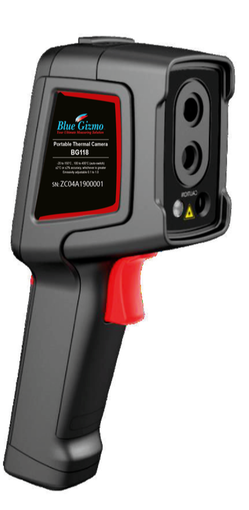A thermal camera is a non-contact measuring instrument that captures and creates an image of an object by using infrared radiation emitted from the object in a process called thermal imaging. The created image represents the temperature of the object. In simple terms, a thermal imaging camera is used to detect infrared energy (heat) and converts it into an image/visual.
A thermal imager uses the infrared energy (heat) to create thermal images. Thermal imagers are sophisticated devices comprised of a sensitive heat sensor with the capacity to detect minute differences in temperature. The lens of the thermal imager captures the infrared energy (heat) on a set of detectors and then creates a detailed image\visual called a thermogram. Thermograms are images that use an infrared camera to detect the heat patterns. The thermogram is then converted to electrical signals to create a thermal image that we can see and interpret.
The common standard today for thermal camera is to show warmer objects with a yellow-orange hue that gets brighter as the object gets hotter. Colder objects are displayed with a blue or purple colour.
Equipped with 120×90 WLP IR modules, BG118 thermal cameras can display radiometric data of 10 800 pixels instantly - which helps quickly detect large areas and pinpoint fault spots accurately. It can also easily save images and data, and download quickly via USB, removable TF/SD card.
Equipped with 120×90 WLP IR modules, BG118 thermal cameras can display radiometric data of 10 800 pixels instantly - which helps quickly detect large areas and pinpoint fault spots accurately. It can also easily save images and data, and download quickly via USB, removable TF/SD card.
|













